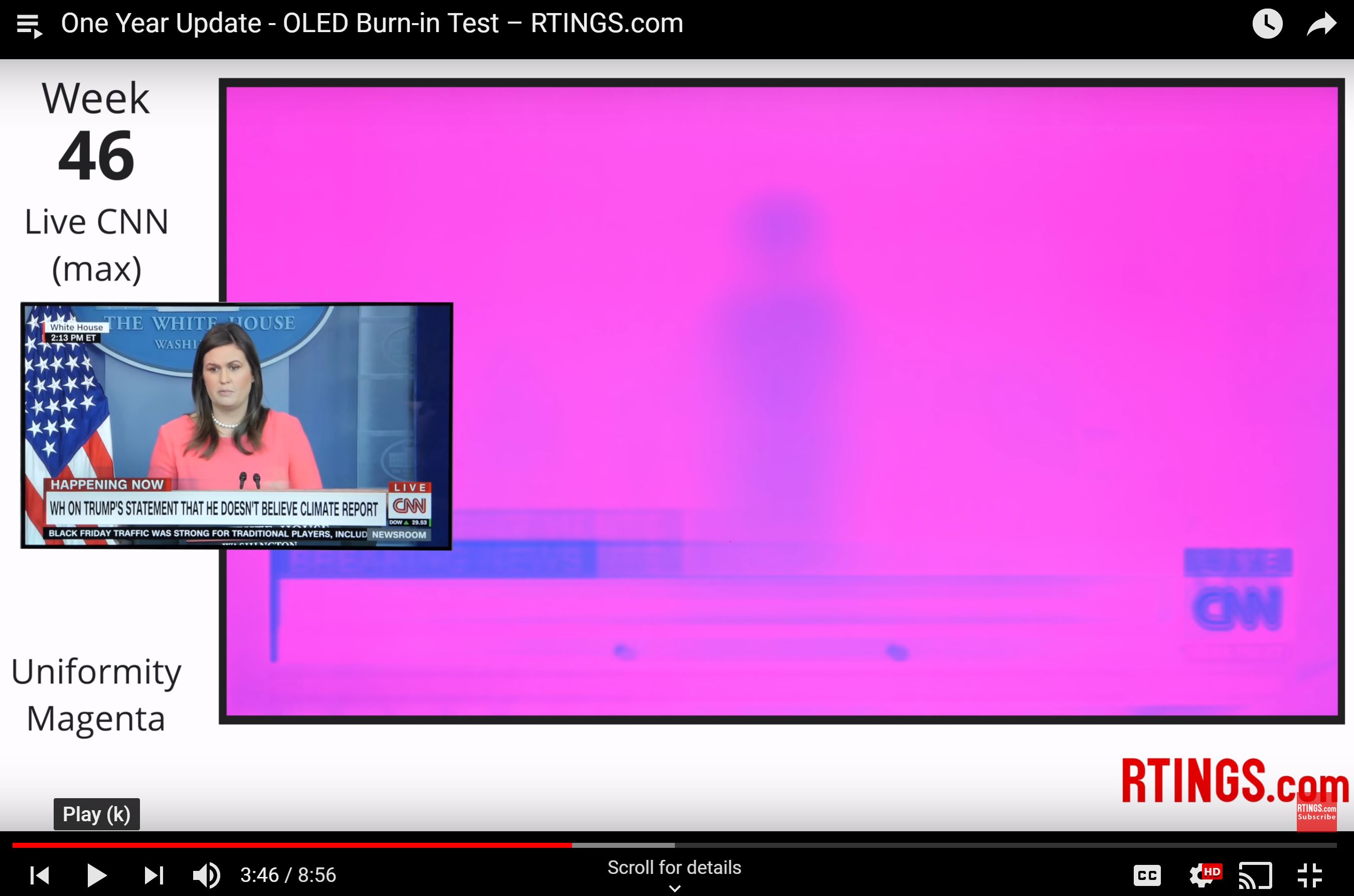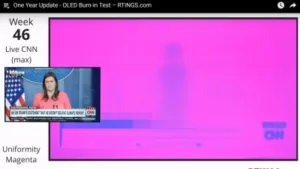Since the very first QD-enabled product in 2013 (Sony’s Triluminous technology) the QD camp has been promoting wide color gamut as the main benefit of this technology. And it’s true, the colors on a QD-enabled LCD are truly breathtaking and far superior to your generic LCD.

Color
A quick look at the color gamut comparison on RTings.com clearly shows that QD-enabled TVs win here. The top seven TVs tested all contain quantum dots, and have gamut coverage of 98-100% DCI-P3 u’v’ (I rounded) and 76-83% Rec2020 u’v’.

Interestingly, the only non-Samsung TV on the list is the Vizio P-series Quantum, which contains a QD film with Nanosys Hyperion QDs. This technology is a hybrid cadmium-containing green QD, and non-Cd red QD, with an overall cadmium content of <100 ppm which makes it RoHS compliant. The green CdSe emission peak width is presumably much narrower than the non-Cd QDs used in Samsung displays, but interestingly, the gamut is not quite as high as the Samsung Q7s on the list which are measured a couple of points higher for both DCI-P3 and Rec2020. There any many other optical components in the display that will also contribute to the gamut, not the least of which are the color filters which have a major impact on both color and brightness, so I’ll chalk up the difference to “other optical components” for now.
So, QDs are great for color (we knew that already) but as we all know, color gamut is only one small piece of the puzzle, and it may not carry the most weight for many consumers. I’ll admit that price is probably on the top of my list when I buy a new display, and for many others it is features like functionality, resolution, brightness, contrast, form factor (thin). Since people like to compare QLEDs to OLEDs so often, lets look at the category where OLEDs do quite well – contrast.
Contrast
Since OLEDs can actually turn off each pixel completely, resulting in NO light emission (while LCDs rely on leaky color filters and liquid crystals to determine light throughput), it’s no surprise that OLEDs take the cake and are the top nine TVs tested for contrast (in fact these are the only OLED TVs tested). We can argue over the infinite contrast ratio listed here, but the fact remains that they are much better than any LCD out there.
Brightness
Closely related to contrast, brightness is an increasingly desirable (and advertised) metric. Very few of us watch our TVs in a dark room anymore, and the brighter the TV the better it will look when the afternoon sun is creeping into our living rooms during football season. Here, the QD-enabled TVs generally do better than the OLEDs, but there are a few (dare I say “normal”) LCD sets that outperform the QD sets. There are only 5 models that reach >1000 cd/m² for “real scene brightness” (a small white box over normal content), and only one of those contains QDs (Vizio). However the 2018 Samsung Q#’s are not far behind, and all are higher rated than the very top OLED on the list (2017 LG C7).
Burn In
One other notable area where OLEDs have been bashed recently is the burn-in problem (See our own Ken Werner’s deep dive with his recent blogs “How bad is the OLED-TV burn-in problem?” and “Solving the OLED burn-in problem”). Well lucky for us, RTings just published their one year update recently. I think many of us could have predicted the results. For me there were two main takeaways:
- Static content burns in on OLEDs… sometimes very badly
- If you watch varied content, you are probably OK
The funniest result? A “ghost” appears on the TV showing CNN all day long. Apparently, the camera people are really good at keeping subjects centered and at similar size. Or perhaps Sarah Sander’s glare went right through the feed and into the pixels.

There is a laundry list of great comments from the peanut gallery on this, and I couldn’t help but share a few of my favorites:
“Anyone who watches that much CNN deserves to have OLED burn-in.”
“CNN ruins both your brain and your TV”
“Most TVs explode after a year of CNN”
Ok, no more political comments, I promise.
So, if you avoid Sports Center, CNN, games with bright logos, static content, etc. you will probably be ok, but it’s still a valid fear for many consumers, and it is additional ammo that the QD camp (really any LCD) can use against OLED.
The burn-in problem should go away, or at least be reduced, if QD-OLED becomes a reality. This is because every single sub-pixel is a blue OLED device, and they should all degrade at a similar rate. Now that’s not to say there won’t be other artifacts that show up, it’s a new technology after all and surely there will be drawbacks. QDs took a long time to mature due to stability problems, and in a new form factor (highly concentrated in a color filter) the stability issue could crop up again.
I’m not a big fan of pinning two technologies against one another, but I do like to talk openly about the advantages and disadvantages of each. I strongly believe both OLED and LCD/QDs will be around for a long time to come, and they will both find their niche, until something even better comes along that we can’t resist talking about.
[insert funny comment here about the OLED ghost in your living room from watching too much CNN] I welcome your one-liners.
Peter Palomaki is the owner and chief scientist at Palomaki Consulting, a firm specializing in helping companies solve big problems at the nanoscale. His utilizes his expertise in quantum dots and materials chemistry to solve challenging problems with clients large and small.


